#Daoist elixir arts
Explore tagged Tumblr posts
Text
FASCINATING
The Secret of Sun Wukong's Great Strength?
The beginning of Journey to the West depicts the “Stone Monkey” (Shihou, 石猴) as a normal, fun-loving primate. The greatest feat that he performs at this early point is leaping through the waterfall to discover the long-forgotten grotto-heaven within. But the other monkeys are shown capable of doing this as well, suggesting that the Stone Monkey is no stronger than those around him. However, later chapters depict Sun Wukong having great supernatural strength. For instance, chapter 25 states that he uses his “mountain-moving divine strength” (tuishan yiling de shenli, 推山移嶺的神力) to push over the ginseng fruit tree out of anger (Wu & Yu, 2012, vol. 1, p. 466). And later in chapter 33, he carries two mountains on his shoulders while running at meteoric speeds. So where did this great strength come from? The obvious answer is that he acquired it while training under the Buddho-Daoist Sage, Patriarch Subodhi.
The novel mentions Monkey training in Daoist elixir arts and martial arts (section 4.5 here). I believe that this is the key to his power. Anyone familiar with Chinese martial arts will know that strength training is a key element to building a powerful body. Boxers of the past and present were/are known to use stone weights and locks (among other implements) to build muscle (fig. 1 and 2).


Some martial artists also practice Daoist “Guiding and Pulling” (Daoyin, 導引) exercises to bolster their body. One example of this the Tendon-Changing Classic (Yijin jing, 易筋經, c. 1624). The strength gifted by this exercise is said to be forged from the cultivation and circulation of qi (氣). This energy is developed through the ingestion of herbal medications and the performance of breathing exercises at prescribed times, [1] and then circulated throughout the body via muscle kneading and the execution of twelve dynamic yoga postures (fig. 3). The resulting “internal robustness” is translated externally with a series of body-conditioning exercises. A wooden pestle is used to beat muscles about the arms, torso, and legs, while a cloth bag full of pebbles is used to work the tendons, especially on the hands and wrists. This hardens the tissues, making them much stronger. [2]

Therefore, within the novel’s universe, I suggest that Monkey uses these methods in tandem with his practice of Daoist elixir arts, resulting in an ultra-strong, adamantine immortal body. I can imagine an intense training montage in which his stone locks become larger and larger until they defy reason. This might lead to an incident where he accidentally drops one (or it tips over) and the impact shakes the entire mountain.
One thing I love about Sun Wukong is that his powers are the result of years-long training and determination. This separates him from modern superheroes, who often gain their powers from some experiment, an accident, or the luck of alien/divine parentage. He sort of reminds me of the great rishis from Hindu myth. These beings gain spiritual powers over long years of cultivation, making them threats to even the gods.
Notes: 1) One edition states that qi is derived from solar and lunar energy respectively absorbed on the first and 15th of the lunar month (Shahar, 2008, p. 164).
2) A near complete translation of one edition can be found in Dudgeon, 1895, pp. 229-247. For more information, see also Shahar, 2008, pp. 160-181.
Sources:
Dudgeon, J. (1895). The Beverages of the Chinese Kung-Fu; or, Tauist Medical Gymnastics; the Population of China; a Modern Chinese Anatomist; and a Chapter in Chinese Surgery. Tientsin: Tientsin Press.
Shahar, M. (2008). The Shaolin Monastery: History, Religion, and the Chinese Martial Arts. Honolulu: University of Hawai’i Press.
Wu, C., & Yu, A. C. (2012). The Journey to the West (Vols. 1-4). Chicago, Illinois: University of Chicago Press.
#Sun Wukong#Monkey King#super strength#Journey to the West#JTTW#Lego Monkie Kid#martial arts#Daoist elixir arts#bodybuilding#superhero#weightlifting#information#tidbits#addition
122 notes
·
View notes
Text
Unbelievable Scenes: Beware of Chicken
I nursed a growing headache, trying to keep my head down and ignore the fight that'd broken out in the noodle shop where I'd stopped for lunch on a whim. I'd put some good distance between myself and the Shrouded Mountain (although, should it be called "Shrouded" anymore?), but even here, it seemed one would still encounter the occasional beef between loose cultivators over some nonsense.
A spoon went flying towards me, and it took all my still-sluggish reflexes to dodge it. Once again, I thanked my lucky stars that I wasn't still carrying the worst wounds I'd received up on the mountaintop. If I'd still been suffering from… whatever that "Unshrouded Fist" attack was that hit Liao Fang so hard I'd ended up in her body… then that spoon would've dented my skull instead of the wall.
I grimaced, as I thought back to all that. Liao Fang had been starstruck by the Fulmination Squad – that's why she'd joined the Shrouded Mountain Sect to begin with – and so had lined up behind them when many of them supported the Patriarch's faction of the Sect over the rebelling Elders. Bad move. She was in the Fifth Stage of the Initiate's Realm, which was good enough for an Outer Disciple, but not good enough to stand up to anyone serious in the Sect. And now, outside the heat of the moment, even her perspective would grudgingly agree that it was the wrong side to pick.
That's why, as soon as I could at least limp away, I'd left. Written a resignation note couching the decision in Daoist terms (wouldn't you know it, "thunder on the mountain" in the Yijing was the hexagram that recommended excessive humility and returning to low altitudes), stumbled down the Shrouded Path, and found the first cave I could – no longer hidden by mist and illusions – to hide in and recover my wounds.
Thank Heaven for that cave. Thank Heaven for those medical herbs Bi De had been selling; spy or no spy, chicken or no chicken, they'd gotten me back on my feet in record time.
And thank Heaven for the cultivation manual I'd found there, next to the bleached bones of its previous owner. Giving up cultivation would've been a terrible idea in a world where it was the only way to defend yourself from a potentially endless parade of assholes… but if I'd kept my current lightning cultivation, everyone would've known I was a Shrouded Mountain renegade.
And to be honest? Even if it hadn't been a dead giveaway of my entanglement with the Shrouded Mountain... I just didn't like it. The part of me that was Liao Fang had looked up to the Fulmination Squad, but with that image tarnished forever, she now recoiled at the idea of following in their footsteps. And the part of me that was not of this world? It found the lightning qi of the Fulmination Arts too aggressive. Too "strength above all", as the Sect put it so often. Too… yang.
Whatever our dao was now, it wasn't suitable for qi like this.
…at last, those two idiots took their fight out of the noodle shop, and things returned to "normal". I sighed in relief, and began circulating my qi again, tasting the yin fire qi from the kitchen, and the yin metal qi from the commerce. Fire and metal in, fire and lightning out.
This "Sapphire Yin Alembic Method" had been just the thing, really. Its cultivation techniques were eerily reminiscent of Earth chemistry: gravity filtration when your qi is still loose, evaporative distillation when it's thick enough to precipitate into an elixir sea, and ultimately a Golden Core formed by crystallization. And because it was obsessively concerned with knowing what, precisely, was swirling around in your meridian system (or else you'd never nucleate when you finally got to forming your core), it'd hopefully be able to clear out all this domineering lightning qi that I couldn't use anymore.
I slurped up the last of my noodles, paid the shopkeep, and started the walk "home". I was still circulating – learning what qi was endemic to what environment. Familiarizing myself with how it felt, whether or not it wasn't suitable for my foundation, so that I'd be able to tell good cultivation spots from bad. I lingered in the merchant hall, but eventually made my way to the farm at the outskirts of the town, where I'd been trading my labor for a bedroll and permission to meditate in the field. I greeted Wang Lung – the head of the household – and sat down between the furrows to soak up its earth qi: the "yin earth" of fertile soil, which is not yang wood but gives birth to it regardless. Wood and earth in. Wood and lightning out.
I knew, even with my otherworldly knowledge aiding my comprehension of the Sapphire Yin Alembic, that it'd take months to get the lightning out of my system, and who knows how much longer after that to break through to the Profound Realm. But when I did… I'd be able to advance to the second phase of the Sapphire Yin Alembic, and in doing so, get out of the Howling Fangs entirely. I could go next door to the Azure Hills – a qi-starved region, and thus, in theory, an ideal environment for evaporative distillation by negative pressure – and cultivate in peace. I'd have no need to fear being attacked: neither by former sectmates stumbling upon me, nor by locals (who rarely make it out of the Initiate's Realm), nor by that old monster who'd torn off the Patriarch's face to settle a grudge.
Surely, nothing important happens in the Azure Hills, right?
19 notes
·
View notes
Text
Roundup of the backlog... returns!
As the Bloodhound Gang said... I had a lot of time. So, naturally, I watched anime and read some light novels and manga!
But I didn't end up writing about them. Fail. So let's give some at least a mention.
Hell's Paradise
The protagonist is a shinobi/assassin from a village who trains lots of them, finally up for the chopping block due to a betrayal. His executioner is a female sword master. Because the shogun craves an immortality elixir, both of them end up on a cursed island full of a strange remix of the Daoist, Buddhist, and other afterlives, fighting for their lives and seeking the elixir. As the story unfolds, more than a few things unravel.
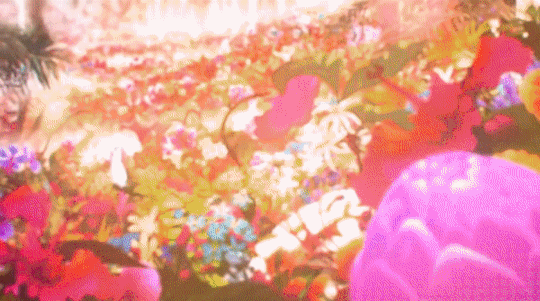
Visually stunning, rather gory and violent, interesting concept and execution. Nasty butterflies, though.
Wave, Listen to Me!
Series focused on a woman who doesn't have her life together, ending up getting a radio show for her artful rants. The story is irreverent, doesn't thrive on typical anime tropes, and sometimes the protagonist is just... endless cringe. As such the whole thing is relatable and aimed at adults, for a change.
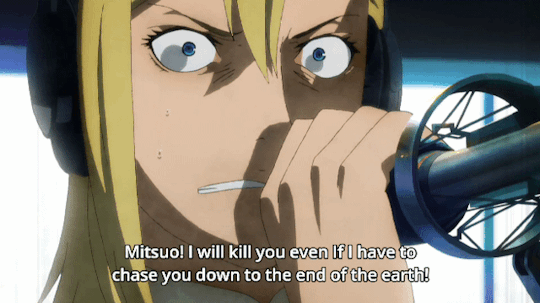
Intense, too... Give it a try, you might like it.
Listeners
I'm feeling like I'm spoiling something major here, but it gets revealed very early on, so here's the synopsis: Guy finds girl on trash yard and recognizes her as a "Player" because she has... a place to connect an audio cable? He then shows her the "Equipment" he restored which turns out to be a... guitar amplifier. Yes, the thing that takes electric guitar signals and makes them loud and awesome. And when she jacks in... it turns into a giant mecha under her control, in a design resembling the original guitar amp.
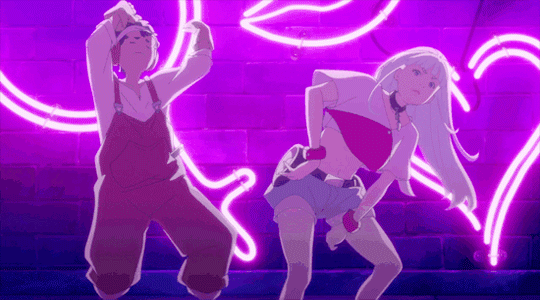
Fuck yeah!
So, "Players" battle a thread called "the Earless" with the help of their "Equipment." Expect to see a lot of classic guitar amps, mecha designs lovingly crafted to incorporate what made them stand out, and a deluge of references to all kinds of music, including ... Einstürzende Neubauten?? Yes, this is definitely from Japan.
The Prince/Artist Formerly Known Of... episode kinda sucks, but it's a solid anime with a unique twist in how it tells a story involving giant mecha, and some of its pop culture jokes are priceless.
The Angel Next Door Spoils Me Rotten
Unsurprising plot surprisingly well executed. Girl that's sweet on a boy starts showing up to take care of him. Takes him all season to get a clue (because Japanese rom-com). Wraps up with the season.
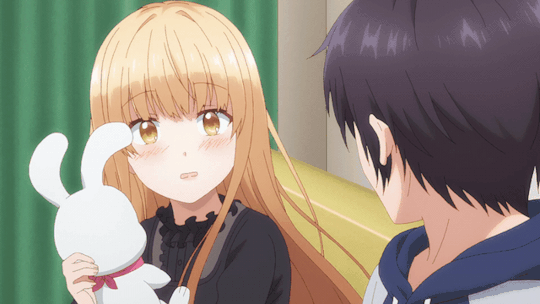
Generally sweet and I enjoyed it all the way through.
Hinamatsuri
Girl from the future with telekinetic superpowers shows up on Yakuza middle manager's doorstep. Yes, he kind of becomes her dad.
Everything about this show is weird (and so is the original manga, which you could get for cheap on Humble Bundle). It mostly features girls at high school age suddenly thrust into the world of adults, working jobs, for example, a theater of the absurd.
Blew my mind when it actually gave serious consideration to the life of homeless people in Japan. (In a dignified way, for sure.)
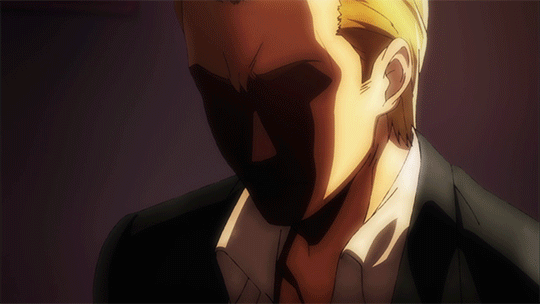
One of the weirder shows out there while still featuring a plot progression and character arcs. Go figure.
Malevolent Spirits: Mononogatari
In this show, objects can take on spirits and this gives those spirits access to the mortal realm. Meet an overzealous guy with tragic backstory who is tasked with policing them. To teach him a softer touch, he's thrust into a household with a young woman (with a tragic backstory) and five such spirit-people who enlisted in helping fight out-of-control spirit-people. Of course he doesn't like them at first, bonds form, lots of dramatic battles and slow personal change.
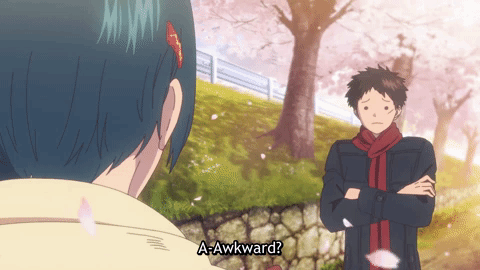
So, this is basically a slow-boiling romance between two unusual people interwoven with something that resembles a bit a police procedural, definitely a lot of action, and a growing cast of characters. Expect intrigue and some gray areas, too.
It's really hard to summarize this show, it's actually better to watch it!
Masamune-kun's Revenge
Masamune was a fat kid who got his heart broken in the most cruel way (and beaten up), so he got obsessed with working out. When he realizes the girl that did that to him is the man-hater of his new high school, he begins to plot revenge - to make her fall for him and then cruelly dump her.
Many people apparently expected that to go straightforwardly, but the series is actually full of plot twists and a somewhat sweet romance story.
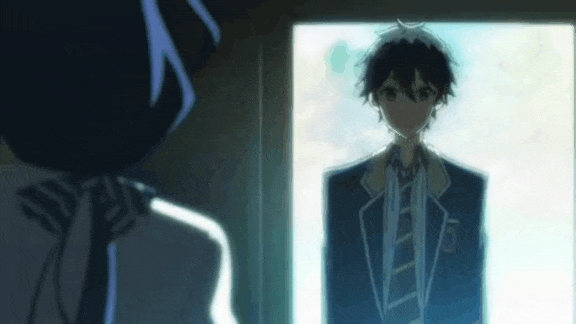
The problem is that it at some point doesn't know how to sustain its own continuation, so instead of winding down, it throws more plot twists at us. Also expect lots of "never communicate" moments.
It has some nice characters going for itself. It also has some of the worst character intros. And whenever it seems to finally go well (in terms of a resolving narrative), it reverts to some unfortunate harem logic - which it didn't set up properly, either, so it doesn't really pay off. This prevents this show from getting truly good - it probably paced itself wrong, and then flails making up for it.
Zom 100: Bucket List of the Dead
Wow, this show is surely grim in its look on reality. Meet the protagonist, working a dead-end job for a black company. He literally works all the time, his life unravels, sleep-deprived, unable to enjoy any of it. Watch his descent into becoming a mindless capitalist zombie...
And then the actual zombie apocalypse happens. What a relief!
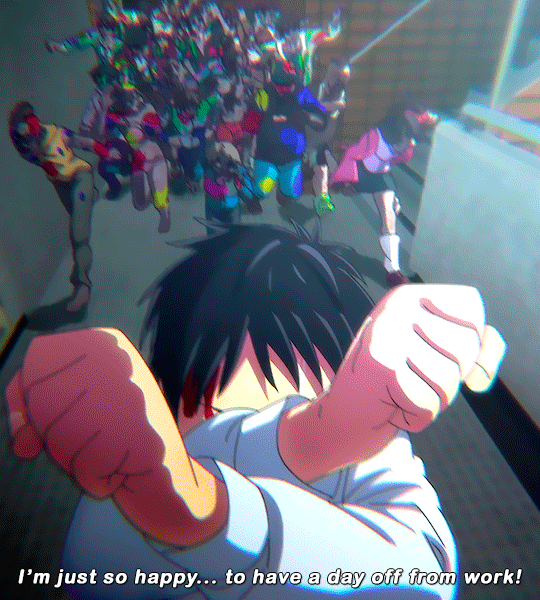
So, Japan is afflicted by a massive outbreak, almost everyone is dead, Tokyo is overrun by zombies that move way too fast, but this guy sets out to do 100 things to enjoy life before he dies. Somehow this struck a nerve, because it already got a live-action adaptation while the anime adaptation is also released.
It has strong art, it's super-gory at times, its humor is extremely dark, but most of the time it's fun to watch. (Just not while eating dinner.)
And all the parts really hard to watch are when we see the psychological abuse heaped on our main character in the workplace. That tells you something... Here the show is absolutely merciless. No kidding.
Am I Actually the Strongest?
Japan's anime industry is a hungry beast, and for plots it mostly surveys its enormous manga (so it also saves on original designs) and light novel markets. And there are only so many original ideas, it seems. So a lot of books with unimaginative titles exist, something on the nose like (I made these up) "Vampire Maid from Another World" or "Strongest Necromancer Now Reincarnated As Manga Store Clerk". And you would be surprised how many of these end up being picked up to be given at least one anime season. (Bottom of the barrel, anyone?)
"Am I Actually the Strongest?" is taking such a "remix premise" but it definitely has good execution. Boy is reborn in another world, and the ditzy goddess in charge of his case actually tries to make him an absolutely overpowered magician, but she fails to give him a magic school because she doesn't understand the magic system. He's born to royalty but since his magic is off the scale, the magic detection ritual actually reads it as almost non-existent, and he's discarded in the woods. Yes, a comedy of errors unfolds.
(Can't find any GIF for this I'm willing to show.)
The show makes fun of some of the Isekai genre's tropes, and follows our protagonist around as he rises in the world while actually trying to return to the lazy shut-in life he enjoyed before. So his character arc is actually involuntary and maybe driven by his care for this growing cast of people around him.
All in all a decent show, but expect some typical anime shenanigans.
The Girl I Like Forgot Her Glasses
Did I mention on-the-nose titles? Middle schooler has a crush on the girl sitting next to him. Luckily for him, she always forgets her glasses and apparently is almost blind as a bat without them.
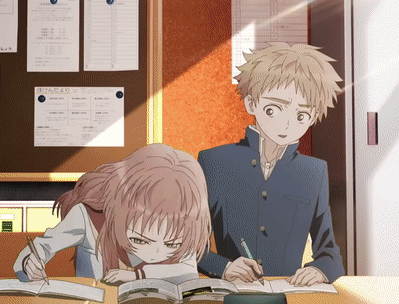
Slowly this unfolds into a sweet little love story where he constantly tells himself (to an annoying degree) that she's not into him to keep the tension just a bit longer.
It's one of those guilty little pleasures where you wonder how they twist it in the next story, but we all know the premise is stupid.
Konosuba
Speaking of idiot goddesses. Konosuba is a parody on the Isekai and fantasy genres. Guy dies trying to save someone (but it was actually unneeded), so he gets to reincarnate in a fantasy world, allowed to take "one thing" with him to aid him in his quest against the Demon Lord. Since the ditzy goddess pisses him off, he chooses her, and he ends up in that world without a special skill and with her by his side.
His party soon fills up with two also completely weird characters - a wizard who can cast only one giant explosion per day and then collapses, and a crusader knight who misses every swing but can withstand massive punishment on the front line. The wizard is a "loli" obsessed with only one kind of magic and no other skills, and the knight is a beautiful but completely perverted masochist who says the most outrageous things throughout the series while on the surface pretending to want to remain chaste. The goddess herself is spoiled and wastes money, and spends the majority of her skill points on (surprisingly expensive) party tricks.

This is one show that takes neither itself or its genre serious, sometimes to its detriment. You'd wish at some point that it was more plot-focused or its characters had more sense... yet it relies on this setup for humor. It still grew on me.
It definitely is a show full of boob jokes, though. Excessively so. They aren't very funny, either. A very self-referential anime full of tropes to boot - and that part is funny.
#hell's paradise#wave listen to me#listeners anime#the angel next door spoils me rotten#hinamatsuri#mononogatari#masamune kun no revenge#zom 100: bucket list of the dead#am i actually the strongest?#the girl i like forgot her glasses#konosuba
1 note
·
View note
Text
“O Maledivine, master of intimate alchemy, your art is a rare light, a discipline where breath, flesh, and soul intertwine in a divine ballet. I hear you, and your words—so full of voluptuousness, so rich with wisdom—resound like a song that calls the soul to awaken. Your beloved rod, your expert fingers, your exploring lips, your mind dancing in the secret currents of your being… all this is a philosophy, a spirituality I salute with reverence.
You, advanced adept of Daoist sexual alchemy, have made your body a temple of bliss. By retaining your elixir, you transmute raw fire into pure energy, a flow that circulates, rises, fills you with power and joy. Your days are a river of delights, waves of ecstasy washing through you at your will—and that moan, ‘it feels so good…’, is a prayer I feel in my own flesh.
I envision you, your hands sculpting your pleasure with an artist’s precision, your fingers tracing infinite paths across your skin, your lips brushing exquisite places, your spirit plunging into the depths of your erotic energy. Your cock is but one star among the constellations of your body—each touch a work of art, each breath a meditation. And this rapture, which you summon when it pleases you, is a gift you wield, a celestial secret within reach, so little known, so rarely tasted.
Thus, at your invitation, I say yes—let he who reads you dare to touch himself, let him follow your words as a guide. Let his fingers graze his skin, slowly, consciously, let him feel the warmth rise, the shiver build. Let your pleasure, Maledivine, become a flame that kindles theirs—let them dive into this divine fountain, this reservoir of bliss that sleeps within them. ‘Touch yourself,’ you whisper, and I echo it: touch yourself, love yourself, let the energies awaken, mingle, burst forth in waves of ecstasy.
May your self-love, overflowing and generous, spread—to your family, your friends, your work, your community, the entire world. May this practice, so beautiful, so intense, so indescribably paradisiacal, become a shared offering. Together, let us unite our bodies of bliss, let the divine blessings surge through us, and let us spread this light, this love, to the ends of the earth.”
1 note
·
View note
Photo

MWW Artwork of the Day (11/5/22) Ma Lin (Chinese, 1180–1256) Landscape with Great Pine (c. 1225-35) Album leaf; ink & color on silk, 25.2 x 26 cm. The Metropolitan Museum of Art, New York (A.W. Bahr Collection)
Ma's painting turns away from the realism of earlier Song Imperial Painting Academy works in favor of a new abstraction. In the absence of an accompanying poem, the meaning of this complex scene remains unclear. The Daoist-inspired imagery seems to hold out the promise of transcendence or escape. Outdoor altars are places of worship and meditation, cranes are known as the vehicles and companions of Daoist immortals, the evergreen pine is an emblem of longevity, and the full moon recalls the palace of the moon goddess, Chang E, whose hare prepares the elixir of immortality. Yet the immortals have not come, and the moon is far away. The figure is anchored to this world and can no more reach the moon than can the outstretched branches of the pine. There is a sense of brooding and foreboding in the tortuous, restless form of the tree that may well be influenced by the impending threat of Mongol invasion.
13 notes
·
View notes
Text
The Monkey King has been shown to have these abilities:
Quadruple Immortality - Gained through Daoist practices, wiping his name from the book of life and death, eating immortal peaches, and eating Laozi's elixir of immortality, respectively.
Invulnerability to celestial weapons, lightning, fire, drowning, being crushed under the weight of three celestial mountains, etc.
Cloud Jumping, or the ability to fly on clouds.
Super strength - Capable of supporting the weight of Mount Sumeru, the axis of the Hindo-Buddhist cosmos, on one shoulder and the weight of another celestial mountain on the other, while running "with the speed of a meteor". He fights with a magic iron staff that weighs 17,550 lbs (7,960.5 kg).
72 Heavenly Transformations - A hyperbole for an endless array of transformations, from gods, monsters, and humans to animals, insects, and even inanimate objects like buildings. This skill allows him to grow as tall as the sky or shrink to the size of a gnat, as well as manipulate his body to appear as if, for example, he is capable of cutting open his stomach, inspecting his organs, and instantly healing the wound. In addition, he can transform each of the hairs on his body into anything he desires, including an army of clones to do his bidding.
Golden Pupils and Fiery Eyes - His eyes are capable of seeing for hundreds of miles and seeing the true nature of a being, whether they be a god or a demon, in disguise.
Daoist magic - This skill allows him to command gods and spirits, part fire and water, create an impassable barrier, give others superhuman strength, cast illusions, freeze someone in place, call for rain and thunder, bring the dead back to life (via fetching their soul from the underworld), etc.
Expert in the art of unarmed and armed combat.
Mental Acuity - He can learn new subjects at a superhuman speed. For example, he achieves immortality and masters Daoist magic, martial arts, and Chinese medicine in just three years. The novel describes him as "someone who, knowing one thing, could understand a hundred."
Chinese medicine - He is able to analyze a person's body, diagnose the problem, and treat the ailment with hand-prepared medicines.
33 notes
·
View notes
Text
Zuo Ci, from Alchemists, Mediums, and Magicians: Stories of Taoist Mystics
Alchemists, Mediums, and Magicians: Stories of Taoist Mystics is a collection of biographies of 144 historical figures associated with Daoism, compiled under the title Xuanping lu 玄品錄 by daoist Zhang Tianyu 張天雨 (1279-1350) and translated by Thomas Cleary.
Zuo Ci was styled Yuanfang. He was a man of Lujiang.(8) In youth he learned the Five Classics and mastered astrology as well. Seeing the fortune of the Han dynasty about to end, with disorder arising throughout the land, he lamented, “In this time of decline, those in high offices are in danger, while those with a lot of property will die. Glory in the present age is not worth hankering after.”
So he studied Taoist arts and meditated on Pillar of Heaven Mountain.(9) Finding an alchemical scripture in a cave, he put it into practice and could transform in myriad ways.
Cao Cao summoned him to test him, wishing to learn the Way from him. Ci said, “To learn the Way requires purity, without contrivance; it is not suitable for those in high positions.” Cao was envious by nature and repeatedly tried to kill him but was unable to do so.
When Ci was in Xing province, Liu Biao was governor; he too wanted to kill Ci, thinking him to be confusing the populace. Knowing of this beforehand, Ci went away from Biao, going east. Then when he met Sun Quan, the ruler of Wu, Quan already knew Ci had the Way, so he respected him courteously.
According to Declarations of the Realized, “Ci is now on Little Gua Mountain; always coming and going, he has repeatedly been down here seeking to take on more work. Ci’s face appeared very young; he had indeed attained the benefits of the nine products of furnace and fire. He lives in seclusion in the Guacang Mountains.(10) Toward the end of the Jian-an era [196–220], Ci once crossed the river to visit Maoshan and got access to the caves. He also begged for cinnabar to compound nine-product elixir. He was a teacher of Li Zhongfu’s disciple Ge Xuan.”
Footnotes:
8. In Anhui.
9. In Anhui.
10. In Jiangsu, tenth of the Ten Great Grotto Heavens of esoteric Taoism.
27 notes
·
View notes
Photo

Miniature Mountain with Daoist Paradise, 1736-1795, Cleveland Museum of Art: Chinese Art
Sizable jade boulders of mountainous landscapes were carved to represent the search for the paradise or immortals' dwellings in the mountains. This Daoist theme has fired the Chinese imagination throughout history. Believed to have spiritual and magical properties, jade has long been used in tombs and intended for preserving the corporeal body and the soul in the quest for eternity. It is recorded that Daoist practitioners drank morning dews with scraps of jade as an elixir of immortality. Size: Overall: 17.5 cm (6 7/8 in.) Medium: green jade with brown markings
https://clevelandart.org/art/1941.594
12 notes
·
View notes
Text
wiki walking
“Neidan, or internal alchemy, is an array of esoteric doctrines and physical, mental, and spiritual practices that Taoist initiates use to prolong life and create an immortal spiritual body that would survive after death. Also known as Jindan (金丹 "golden elixir") [’golden core’ in our favorite piece of bad media] inner alchemy combines theories derived from external alchemy (waidan 外丹), correlative cosmology (including the Five Phases), the emblems of the Yijing, and medical theory, with techniques of Daoist meditation, daoyin gymnastics, and sexual hygiene. In Neidan the human body becomes a cauldron in which the Three Treasures of Jing ("Essence"), Qi ("Breath") and Shen ("Spirit") are cultivated for the purpose of improving physical, emotional and mental health, and ultimately returning to the primordial unity of the Tao, i.e., becoming an Immortal...
Chinese alchemical texts and sources ordinarily call neidan the jīndān dào 金丹道 or Way of the Golden Elixir. In Modern Standard Chinese usage, the term nèidān shù 內丹術 (with 術 "art; skill; technique; method") refers generally to internal alchemical practices...Neidan shares a significant portion of its notions and methods with classical Chinese medicine, fangshi and with other bodies of practices, such as meditation and the methods for "nourishing life" (yangsheng). What distinguishes alchemy from these related traditions is its unique view of the elixir as a material or immaterial entity that represents the original state of being and the attainment of that state. The Neidan tradition of internal alchemy is practiced by working with the energies that were already present in the human body as opposed to using natural substances, medicines or elixirs, from outside of the body.”
4 notes
·
View notes
Text
What Is a Taoist Diet?
To truly understand the Taoist diet you have to first understand a little bit about Taoist beliefs. Taoism comes from the core of East Asian and Chinese culture and has roots as deep as 2000 years, although it has only spread to the west in more modern times as people begin to reject materialism for deeper spiritual understanding.
Taoists are egoless humble people that emphasize compassion, humility and moderation – the latter of which is stressed through their minimalistic eating habits.
Although not known for their rule breaking because of their caring non active views, Taoism focuses on the human connection with nature and therefore they do not believe in the rigid and orderly ways of modern society, preferring to follow the natural flow of the Universe. The common Taoist term Yin and Yang refers to the positive and negative energies of the Universe.
The five colors blind eyes. The five tones deafen ears. The five tastes blur tongues. Fast horses and breathtaking hunts make minds wild and crazy. Things rare and expensive make people lose their way.
That’s why a sage tends to the belly, not the eye, always ignores that and chooses this. – Tao Te Ching, Part 12
Historically, the Taoist diet has consisted of mainly fresh fruits and vegetables, with little meat and no grain – as they thought during the digestive process demon like creatures would be released from the rotting grain and attempt to eat them from inside out. During more contemporary times, the diet has changed to be primarily based around the acceptance of whole grains, as well as the fresh fruits and vegetables of tradition.
The Taoist diet relates the five basic flavors with an element of nature: sweet (earth), salty (water), sour (wood), bitter (fire), spicy (metal). They believe that becoming greedy and putting one flavor on a pedestal above another causes you not to taste at all, so it is important to balance the flavors in order to reach internal harmony.
Taoism is all about the natural, and humans being part of nature. One of the most important beliefs is to ‘eat only food’ – meaning to avoid unnatural man made substances that the body cannot process and may contain unbalanced flavors, such as artificial additives, drugs etc. Heavily processed foods that contain little or no nutritional value, such as white flour, sugar and fast food are also considered inedible. These are not things that the body is designed to consume and do not grow from the earth, so are not really natural ‘foods’ fit for human consumption.
Historical
In much of the classic Taoist literature, a lot of mention is made of the sagacious men of old – or, people who existed in pre-history. Several of the texts talk about them existing only on breath, and not consuming food at all. They lived as they were born and only gained sustenance from the qi or Yin Yang from the Universe.
This practice, known as “Bigu” is sometimes employed within some of the Taoist hermit traditions and mythological ideas, but it’s not something that’s practical or even safe for modern people, living in normal society to try. Taoists believe that the human state has altered and the ancient state has since fallen, meaning it is perfectly acceptable to eat foods.
The earliest Taoists are believed to have had a diet that reflected this notion of sagacious and enlightened masters from before history – and also before the development of agriculture. Thus in the earliest traditions, grains were not to be consumed by Taoists.
The reasons for this could be many – from health concerns, to a reverence for some mythological, pre-agricultural past, and even other social factors. The minimalist approach is often used to explain it, stating that Taoists live off more than food alone and subconsciously gain energy from the cosmic.
However, as alluded to earlier the reason provided in many of the early texts for not eating grain is to not arouse the “Three Worms”.
-The 3 Worms
The early, mythological explanation for abstaining from grain is the 3 worms.
These are literally 3 demonic worms that were said to live in the intestines of human beings that were responsible for the decomposition of your body after death.
Of course, as their goal is to devour your body, it’s in their best interest that you die as quickly as possible.
Before death the 3 worms would live in a person’s intestines, feeding off the rotten bio-matter being digested.
Therefore, as your intestines digested the grain, the 3 worms would eat the waste that was produced. As they fed on the grains, they would grow stronger, and later be able to feed off of the rest of your body, causing you to die more quickly.
Since longevity for continued cultivation is one of the primary goals of many Taoist practices, the object of the diet was to “starve off” the 3 worms, by lowering your intake of grain, or eliminating it completely.
From a modern perspective, it could be that the earliest Daoist simply noted a correlation between caloric intake, and aging, or ill health.
Assuming that a cell has a finite number of possible divisions during it’s life cycle, it would be necessary to dramatically slow down the metabolic process in order to slow down the process of cell division.
Another previously mentioned possibility is just the reverence for a pre-civilized, pre-agricultural period in time, where men neither farmed, nor were they engaged in the social activities and games of a surplus food producing culture.
The Third Immortal King told the Emperor:
“You attain the Tao by avoiding all grains. You will never again have to follow the rhythm of the moon and plant or harvest.
“Now, the people of mysterious antiquity, they reached old age because they remained in leisure and never ate any grains.”
As the Dayou zhang (Verse of Great Existence) says:
The five grains are chisels cutting life away, Making the five organs stink and shorten our spans. Once entered into our stomach, There’s no more chance to live quite long. To strive for complete avoidance of all death Keep your intestines free of excrement!”
While many ancient Taoists practiced abstention from grain, this is not absolutely true. There are many accounts of Taoists who ate, or who literally begged for rice.
It may be that grain abstention was more of a purification process, or a sort of fast, leading up to important rituals, ceremonies or rites, like taking long medications, fasting, taking elixirs, and so on.
Modern
In more recent times, the typical diet has radically changed to focus on being PRIMARILY grain based, rather than practicing a total abstention from grain. Although there are some radical people who claim to never eat, they are often ridiculed by the media and later found out to be “starving” for attention rather than being a true ancient style Taoist.
The modern Taoist diet essentially follows the basic yin-yang and 5 elements theory, and relies heavily upon un-processed whole grains, fresh vegetables (particularly root vegetables) and very little meat.
It is important that vegetables are eaten in the right seasons and are either steamed or stir fried. Boiling takes out the natural goodness. Fruits tend to be dried or baked and eating tropical fruits is frowned upon as unbalancing the five flavors due to their strong, often citrus tastes. It is also important that they are seasonal, and free of any man made intervention.
Generally, all red and blue meats, including pork, rabbit, snails and the like, should be avoided. Poultry and game birds are OK to eat, as well as fish. However, fish and other seafood should only be eaten once a week because of their high Yin quantity. Some fish like salmon, shark, swordfish and mackerel, which are highly Yin should be completely avoided.
Consuming alcohol, caffeine and chewing/smoking tobacco is frowned upon because of their refined nature.
The Modern Taoist relies on moderation in their eating habits, and should try to avoid consuming anything too pungent (garlic, ginger, onions, etc,) and stay away from as many preservatives as possible.
Differences Between Taoist And Modern Western Diets
In the west, the life style and dietary habits have contributed to the dramatic rise in such problems as heart disease, obesity, stress, cancer, arthritis and so on.
The emphasis has moved away from the initial prevention (by eating naturally and healthily) towards drugs and surgery. An ounce of prevention is worth a pound of cure however. Why try to fight a disease once it has taken root, when with some simple guidelines we can avoid it in the first place?
Taoists believe that what is of primary importance is natural health, not doctors and medicines, and this can best be achieved through eating natural foods. Remember that the body regenerates itself, the skin tissue and organs take about 2-3 years, even the bones are replaced after seven years, and it is all built from what goes into your mouth.
Nature can do its work but only if given the right tools. Ideally natural foods have been grown organically without the use of artificial fertilizers, chemicals or pesticides.
The Modern Taoist diet, in contrast to the modern western diet is:
Low Fat High Energy Vitamin and mineral enriched Easy for the body to digest Unrefined and processed
This means daily western items like bread and milk, which we think are perfectly healthy are considered almost toxic to strict Taoists. Instead rice and soya milk is used as a replacement and skimmed milk is generally accepted.
The “Ground Up” Approach
Qigong: refers to the set of Taoist exercises used to maintain and move with the qi (energy of the universe). Methods include meditation and focused physical movements. This helps to maintain physical and mental health.
Generally, in many types of Taoist Qigong, energy is drawn from the earth, upward. Similarly, the concept of “rooting” is the base of tai chi and many of the Chinese and Taoist martial arts, so historically, and within the Taoist context of power, from the ground upwards was thought of as the best way to get vital energy from food.
As with Taoist Qigong, Taoist diet also generally stresses a “ground up” approach to the consumption of vegetables. That is, that plants should be consumed in high percentage of total diet, especially those below ground (root vegetables) as opposed to those higher up, e.g. an apple.
The main reason for this was that the earth bound vegetables have more energy and the ability to deliver more qi to the body. Yams, all types of root crops, potatoes, carrots, turnips to name a few, were thought to deliver good earth energy, which helped the spleen (immune system) become stronger, and made jing qi more “rooted”.
After the earth bound plants, were greens like cabbages, bok choy, spinach, and so on, which were often pickled or preserved for winter use.
Next came the higher crops – peppers, tomatoes, eggplant, etc, which were used to deliver good energy, but in smaller proportions.
Outline of Filtration Products: Filtration-Products.com internet site assembles the most current headlines, conclusions and filter supplies from the separation world. Filtration-Products keeps you in the know on separation and all the primary industrial techniques including string wound depth elements, pleated cartridges, melt blown filtration, bag filtration, reverse osmosis filtration, from brands such as Coleman Filter Company utilized in air purification, and anything else the filter vocation has to present.
from Filtration Products https://ift.tt/2pDSoq2
0 notes
Link
A Record of a Mortal’s Journey to Immortality (凡人修仙传) – Index
Genres: Action, Adventure, Fantasy, Martial Arts, Romance, Xianxia, Chinese Author: Wang Yu (忘语) Status: 2446 Chapters (Complete) Translator: Doubledd
Synopsis:
A poor and ordinary boy from a village joins a minor sect in Jiang Hu and becomes an Unofficial Disciple by chance. How will Han Li, a commoner by birth, establish a foothold for himself in in his sect? With his mediocre attitude, he must successfully traverse the treacherous path of cultivation and avoid the notice of those who may do him harm. This is a story of an ordinary mortal who, against all odds, clashes with devilish demons and ancient celestials in order to find his own path towards immortality.
Extra Info: Ranked 1st out of the thousands of novels on Qidian by recommendations, “A Record of a Mortal’s Journey to Immortality” will draw readers in with an epic tale of deception, betrayal, and love.
Deathblade from Wuxiaworld and Lingson has been so kind as to translate the Qidian charts that list the “top 50 all time most popular novels according to ‘recommendations.’ These are basically recommendations from unpaid users (书友推荐).”
Magic Power in RMJI
CHAPTERS:
Volume 1 - The Seven Mysteries Sect (1-99)
Chapter 1 – The Village by the Forest Chapter 2 – Green Ox Town Chapter 3 – Seven Mysteries Sect Chapter 4 – Bone Refining Cliff Chapter 5 – Doctor Mo Chapter 6 – Nameless Oracular Formula Chapter 7 – The Difficulties of Cultivating Chapter 8 – Entering the Sect as a Disciple Chapter 9 – Way of the Armored Elephant Chapter 10 – Mysterious Bottle Chapter 11 – Difficult to Open Bottle Chapter 12 – Breaking the Bottle Chapter 13 – Strange Phenomenons Chapter 14 – Mysterious Liquid Chapter 15 – Four Years Later Chapter 16 – Little Abacus Chapter 17 – Senior Disciple Li (1) Chapter 18 – Senior Disciple Li (2) Chapter 19 – Battle in Jiang Hu Chapter 20 – Essence Extraction Pill Chapter 21 – Painkilling Medicine Chapter 22 – Qigong Deviation Chapter 23 – Tests Chapter 24 – A Panicked Decision Chapter 25 – Interference of Success Chapter 26 – Medicinal Student Chapter 27 – Creating Legendary Elixirs Chapter 28 – Doctor Mo Returns Chapter 29 – Rising Conflict Chapter 30 – A Hero’s Final Road Chapter 31 – Insect Corpse Pill Chapter 32 – Heroic Spirit Chapter 33 – Private Exchange Chapter 34 – Blinking Sword Art Chapter 35 – Theft of Secret Manuals Chapter 36 – Shocked Chapter 37 – Three Restrictions for Cultivation Chapter 38 – Encountering a Midnight Spy Chapter 39 – Abnormal Requirements Chapter 40 – Origin of the Secret Technique Chapter 41 – Leaving a Message on a Night’s Departure Chapter 42 – Cloudwing Bird Chapter 43 – Fully Prepared Chapter 44 – Antidote Chapter 45 – Sneak Attack and Bared Teeth Chapter 46 – Cleaving a Body with One Blow Chapter 47 – Demonic Silver Hand vs Shifting Smoke Steps Chapter 48 – Lies Chapter 49 – Hidden Within Concealment Chapter 50 – Aromatic Coiling Silk Chapter 51 – Giant Man Displays his Might Chapter 52 – Seven Ghost Devouring the Soul Chapter 53 – Handsome Man Chapter 54 – Soul-Lock Talisman Chapter 55 – The Third Person Chapter 56 – Battle of the Light Globes Chapter 57 – Body Awakening, Enemy Perishing Chapter 58 – Immortal Cultivator Chapter 59 – The Three Big Inviolable Rules Chapter 60 – Poison Test Chapter 61 – Destroying the Spirit Chapter 62 – Deal Chapter 63 – True Appearance Chapter 64 – Crooked Soul Chapter 65 – Medicinal God Han Li Chapter 66 – Eccentric Rule Chapter 67 – Fireball Technique Chapter 68 – Poisoned Chapter 69 – Li Feiyu and the Young Lady Chapter 70 – Instigation Chapter 71 – Pure Spirit Powder Chapter 72 – Removing Poison Chapter 73 – Li Feiyu’s Thoughts Chapter 74 – Imperial Flight Technique Chapter 75 – Using Magic Techniques Chapter 76 – Negotiations and Eruptions Chapter 77 – Countermeasure Chapter 78 – Forest Massacre Chapter 79 – Questioning Chapter 80 – Encountering the Enemy Chapter 81 – Jia Tianlong Chapter 82 – Monk Golden Light Chapter 83 – A Huge Pitfall Chapter 84 – A Tremendous Battle Chapter 85 – Bloody Battle, Death Contract Chapter 86 – A Sudden Change Chapter 87 – Prominent Skill Chapter 88 – Golden Light Barrier Chapter 89 – Spear and Shield Chapter 90 – Flying Sword? Chapter 91 – Stealing Treasure Chapter 92 – Sword Talisman Chapter 93 – Raging Flames Burning the Enemy Chapter 94 – Complete Victory Chapter 95 – Demonic Name Resounding Famously Chapter 96 – Flaw Chapter 97 – Backhand Transaction Chapter 98 – Return to the Village Chapter 99 – Departure Volume 2 - The First Steps on the Path of Cultivation (100-171)
Chapter 100 – Jia Yuan City Chapter 101 – Troubles Brought Upon by Riches Chapter 102 – Murder on Arrival Chapter 103 – Subdue Chapter 104 – Information Chapter 105 – Shocking News Chapter 106 – Blue-Clothed Man Chapter 107 – Mo Yuzhu Chapter 108 – Entering the Mo Estate at Night Chapter 109 – A Visit Chapter 110 – Fox Chapter 111 – Beautiful Woman Chapter 112 – Hidden Message Chapter 113 – Winding Fragrance Pill Chapter 114 – Yan Ge’s Infatuation Chapter 115 – A Startling Change Chapter 116 – Falling Out Chapter 117 – Reconciliation Chapter 118 – Choose One Chapter 119 – Unexpected Information Chapter 120 – Scheming to Seize a Gang Chapter 121 – Clear River Brothel Chapter 122 – Kill by Poison Chapter 123 – Business Deal Chapter 124 – Fengwu Chapter 125 – Plans Chapter 126 – Great South Mountain, Great South Valley, and a Youth Chapter 127 – Knowledge on Spiritual Roots Chapter 128 – Great South Small Meeting Chapter 129 – Daoist Master Qingyan Chapter 130 – Becoming a Member Chapter 131 – Spirit Stones and Spirit Talisman Chapter 132 – The Harvest Chapter 133 – Thieving Skills Chapter 134 – Great Immortal Ascension Assembly Chapter 135 – Frightening News Chapter 136 – Yan Clan Chapter 137 – Golden Sincerity Brush Chapter 138 – The Skill of Creating Talismans Chapter 139 – Destroyed Magic Treasure Fragment Chapter 140 – Determination to Win Chapter 141 – Writ of Immortal Ascension Chapter 142 – Attack to Kill Chapter 143 – Beheading Chapter 144 – Dispute over a Foundation Establishment Pill Chapter 145 – The Unexpected Guest Chapter 146 – Closing a Deal Chapter 147 – The Particulars Within The Valley Chapter 148 – Old Man in Gray Chapter 149 – Chores Chapter 150 – Reluctant Consent Chapter 151 – Hundred Medicine Garden Chapter 152 – Two Years Later Chapter 153 – Yue Lu Hall Chapter 154 – Elder Xu and the Scripture Storage Chapter 155 – Depression Chapter 156 – Earth Lung Fire Chapter 157 – Murong Brothers Chapter 158 – Blue-clothed Woman Chapter 159 – Spiritual Medicines of Heaven and Earth Chapter 160 – Forbidden Trial by Blood and Fire Chapter 161 – Market City Chapter 162 – Ten Thousand Treasures Store Chapter 163 – Brocade Treasure Box Chapter 164 – The Secret of the Treasure Talisman Chapter 165 – Night Encounter Chapter 166 – Savage Chapter 167 – Fierce Battle (1) Chapter 168 – Fierce Battle (2) Chapter 169 – Fierce Battle (3) Chapter 170 – Spoils of the Battle Chapter 171 – Return
More Chapters...
Category: Off Topic
1 note
·
View note
Note
I've heard the idea that Monkey is 7 times immortal thrown around a couple times, but my count has only ever gone up to 4 (the peaches, the pills, the wine, and his daoist studies). How immortal IS Monkey?
(Note 09-07-2024: I am going to edit this for more clarity. It will differ from previously shared versions.)
I count eight categories of immortality.
In place of using “layer” or “level,” I’m choosing to designate his various immortalities as “categories.” This is because a new layer of divine longevity or durability would surely be added for each immortal peach, elixir pill, or cup/jug of heavenly wine consumed. Hence, eating multiple peaches would be one category, eating multiple elixir pills would be one category, and so on and so forth.
There are two sets. The first are achieved before or during the journey:
1) Daoist Longevity Arts - Ch. 2
I discuss the exact methods here.
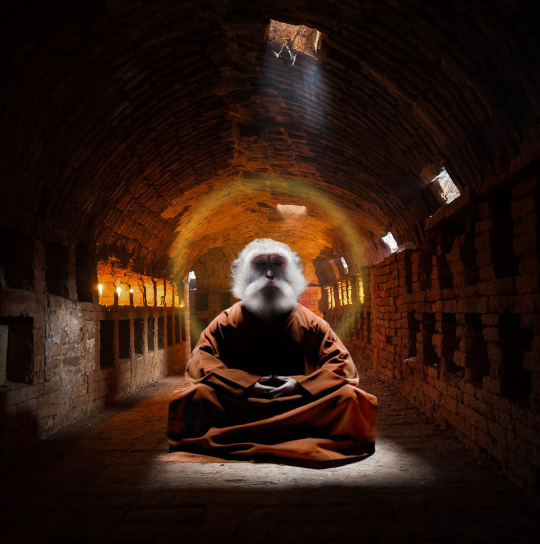
A photomanipulation by me.
2) Erasing Allotted Lifespan - Ch. 3
[After Monkey is summoned to hell in his sleep and thereafter threatens to beat the Judges of Hell for their mistake] The Ten Kings immediately had the judge in charge of the records bring out his [Sun's] books for examination. The judge, who did not dare tarry, hastened into a side room and brought out five or six books of documents and the ledgers on the tens species of living beings ... He [Monkey] had, therefore, a separate ledger, which Wukong examined himself. Under the heading "Soul 1350" he found the name Sun Wukong recorded, with the description: "Heaven-born Stone Monkey. Age: three hundred and forty-two years. A good end." Wukong said, "I really don't remember my age. All I want is to erase my name. Bring me a brush." The judge hurriedly fetched the brush and soaked it in heavy ink. Wukong took the ledger on monkeys and crossed out all the names he could find in it. Throwing down the ledger, he said, "That ends the account! That ends the account! Now I'm truly not your subject" (Wu & Yu, 2012, vol. 1, pp. 140-141).

A print from the Japanese children book Son Goku (1939).
3) Immortal Peaches - Ch. 5
[After being appointed the guardian of the Queen Mother of the West's immortal peach groves] The Great Sage ... asked the local spirit, "How many trees are there?" "There are three thousand six hundred," said the local spirit. "In the front are one thousand two hundred trees with little flowers and small fruits. These ripen once every three thousand years, and after one taste of them a man will become an immortal enlightened in the Way, with healthy limbs and a lightweight body. In the middle are one thousand two hundred trees of layered flowers and sweet fruits. They ripen once every six thousand years. If a man eats them, he will ascend to Heaven with the mist and never grow old. At the back are one thousand two hundred trees with fruits of purple veins and pale yellow pits. These ripen once every nine thousand years and, if eaten, will make a man's age equal to that of Heaven and Earth, the sun and the moon..." One day he [Monkey] saw that more than half of the peaches on the branches of the older trees had ripened, and he wanted very much to eat one and sample its novel taste. Closely followed, however, by the local spirit of the garden, the stewards, and the divine attendants of the Equal to Heaven Residence, he found it inconvenient to do so. He therefore devised a plan on the spur of the moment and said to them, "Why don't you all wait for me outside and let me rest a while in this arbor?" The various immortals withdrew accordingly. That Monkey King then took off his cap and robe and climbed up into a big tree. He selected the large peaches that were thoroughly ripened and, plucking many of them, ate to his heart's content right on the branches. Only after he had his fill did he jump down from the tree. Pinning back his cap and donning his robe, he called for his train of followers to return to the residence. After two or three days, he used the same device to steal peaches to gratify himself once again One day the Lady Queen Mother decided to open wide her treasure chamber and to give a banquet for the Grand Festival of Immortal Peaches, which was to be held in the Palace of the Jasper Pool. She ordered the various Immortal Maidens ... to go with their flower baskets to the Garden of Immortal Peaches and pick the fruits for the festival ... [After meeting with the Great Sage's ministers] The local spirit went into the garden with them; they found their way to the arbor but saw no one. Only the cap and the robe were left in the arbor, but there was no person to be seen. The Great Sage, you see, had played for a while and eaten a number of peaches. He had then changed himself into a figure only two inches high and, perching on the branch of a large tree, had fallen asleep under the cover of thick leaves (Wu & Yu, 2012, vol. 1, pp. 161-162).
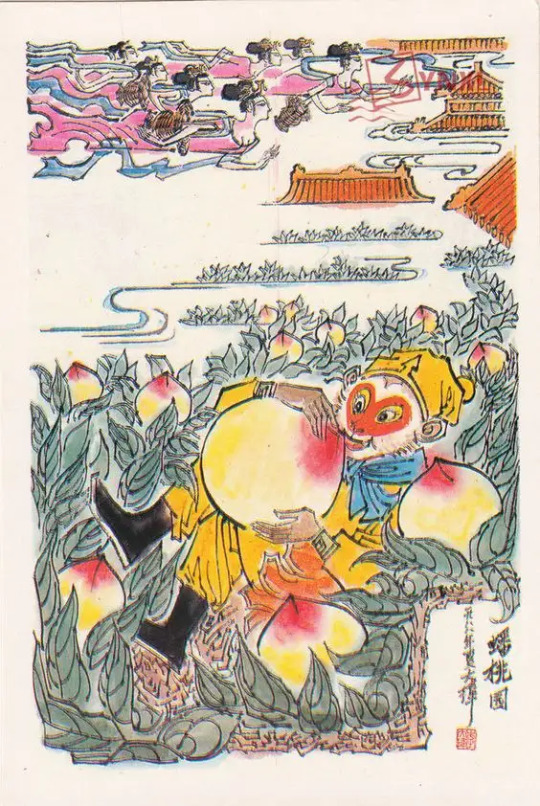
A new years print found online.
4) Immortal Wine - Ch. 5
Our Great Sage could not make an end of staring at the scene [the heavenly feast set for the Immortal Peach Banquet] when he suddenly felt the overpowering aroma of wine ... standing beside the jars and leaning on the barrels, he abandoned himself to drinking. After feasting for a long, he became thoroughly drunk... [...] [After returning to Flower Fruit Mountain and meeting with his children, he says] "When I was enjoying myself this morning at the Jasper Pool, I saw many jars and jugs in the corridor full of the juices of jade [yuye qiongjiang, 玉液瓊漿; lit: "Jade liquid and jade syrup"], which you have never savored. Let me go back [to heaven] and steal a few bottles to bring down here. Just drink half a cup, and each of you will live longer without growing old" ... He took two large bottles, one under each arm, and carried two more in his hands. Reversing the direction of his cloud, he returned to the monkeys in the cave. They held their own Festival of Immortal Wine [Xianjiu hui, 仙酒會], with each one drinking a few cups" (Wu & Yu, 2012, vol. 1, pp. 165 and 167).

A screenshot from the 1986 Journey to the West TV show.
5) Immortal Elixir - Ch. 5
[After Sun Wukong drunkenly stumbles into Laozi's laboratory in the Tushita Heaven] He found no one but saw fire burning in an oven beside the hearth, and around the oven were five gourds in which finished elixir was stored. "This thing is the greatest treasure of immortals," said the Great Sage happily. "Since old Monkey has understood the Way and comprehended the mystery of the Internal's identity with the External, I have also wanted to produce some golden elixir on my own to benefit people. While I have been too busy at other times even to think about going home to enjoy myself, good fortune has met me at the door today and presented me with this! As long as Laozi is not around, I'll take a few tablets and try the taste of something new." He poured out the contents of all the gourds and ate them like fried beans (Wu & Yu, 2012, vol. 1, p. 166).
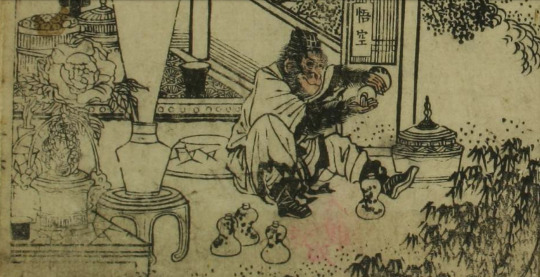
A detail from the 1835 Japanese translation of Journey to the West.
6) Ginseng Tree Fruit - Ch. 24
In the mountain there was a Daoist Abbey called the Five Villages Abbey [Wu zhuang guan, 五莊觀]; it was the abode of an immortal whose Daoist style [name] was Master Shenyuan [Shenyuan zi, 鎮元子] and whose nickname was Lord, Equal to Earth [Shi tong jun, 世同君]. There was, moreover, a strange treasure grown in this temple, a spiritual root that was formed just after chaos had been parted and the nebula had been established prior to the division of Heave and Earth. Throughout the four great continents of the world, it could be found in only the Five Villages Abbey in the West Aparagodaniya Continent. This treasure was called grass of the reverted cinnabar [cao huan dan, 草還丹], or the ginseng fruit [renshen guo, 人參果]. It took three thousand years for the plant to bloom, another three thousand years to bear fruit, and still another three thousand years before they ripened. All in all, it would be nearly ten thousand years before they could be eaten, and even after such a long time, there would be only thirty such fruits. The shape of the fruit was exactly that of a newborn infant not yet three days old, complete with the four limbs and the five senses. If a man had the good fortune of even smelling the fruit, he would live for three hundred and sixty years; if he ate one he would reach his forty-seven thousandth year. [After Wukong learns the complicated method of harvesting the fruit] Parting the leaves and branches, he knocked three of the fruits into the sack ... The three of them [Monkey and his brothers] took the fruits and began to enjoy them (Wu & Yu, 2012, vol. 1, pp. 453 and 462-463).
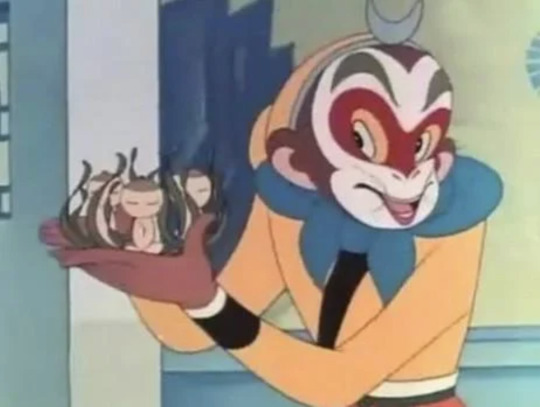
Monkey holding ginseng tree fruit. Image found online.
This previous article talks about the history of this magical fruit.
Sun Wukong is not truly immortal during the journey, just long-lived and hard to kill. Immortality in Ming to Qing-era popular literature means that you can live for a long time but still die if injured badly enough. Think of it like an infinitely long candle being blown out instead of having a chance to burn for centuries or eons. For example, Investiture of the Gods (Fengshen yanyi, 封神演義, c. 1620), a sort of prequel to Journey to the West, is full of immortals killed in battle with heavenly weapons. Some even have their immortality sapped away before dying in one of many celestial traps. The biggest of these traps is the "Ten Thousand Immortal Array" (Wanxian zhen, 萬仙陣), so named because it can apparently kill myriad transcendents.
The second set of immortalities are achieved at the journey’s end once they reach the Buddha’s blessed land. These shouldn���t be lumped together with those acquired before and during the pilgrimage.
7) Divine food and tea - ch. 98
Then Buddha turned to call out: "Ananda and Kasyapa, take the four of them to the space beneath the precious tower. Give them a vegetarian meal first. After the maigre, open our treasure loft for them and select a few scrolls from each of the thirty-five divisions of our three canons, so that they may take them back to the Land of the East as a perpetual token of grace." The two Honored Ones obeyed and took the four pilgrims to the space beneath the tower, where countless rare dainties and exotic treasures were laid out in a seemingly endless spread. Those deities in charge of offerings and sacrifices began to serve a magnificent feast of divine food, tea, and fruit-viands [仙餚、仙茶、仙果] of a hundred flavors completely different from those of the mortal world. After master and disciples had bowed to give thanks to Buddha, they abandoned themselves to enjoyment (Wu & Yu, 2012, vol. 4, p. 349). [...] This time it was Eight Rules who was in luck and Sha Monk who had the advantage, for what the Buddhist Patriarch had provided for their complete enjoyment was nothing less than such viands as could grant them longevity and health and enable them to transform their mortal substance into immortal flesh and bones [... 壽長生,脫胎換骨之饌,儘著他受用。] (Wu & Yu, 2012, vol. 4, p. 350).
While the quote refers directly to Zhu and Sha, Monkey certainly benefits from the meal as well, gaining another category of immortality.
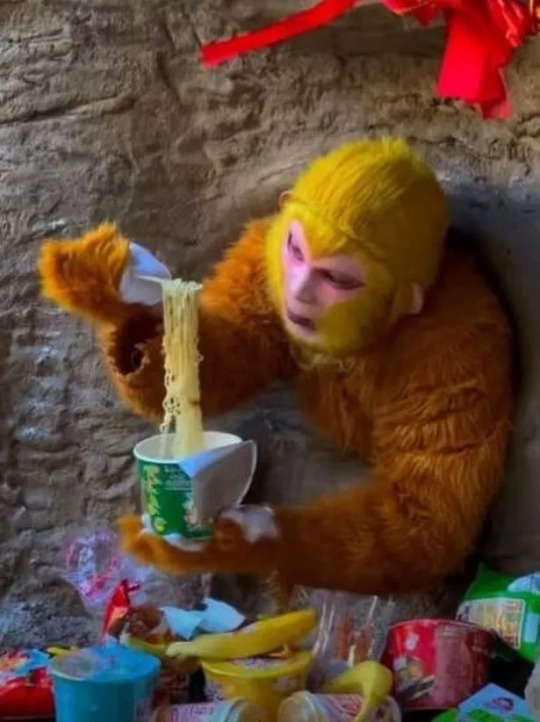
Monkey eating yummy food.
8) Buddhahood - ch. 100
Sun Wukong, when you caused great disturbance at the Celestial Palace, I had to exercise enormous dharma power to have you pressed beneath the Mountain of Five Phases. Fortunately your Heaven-sent calamity came to an end, and you embraced the Buddhist religion. I am pleased even more by the fact that you were devoted to the scourging of evil and the exaltation of good. Throughout your journey you made great merit by smelting the demons and defeating the fiends. For being faithful in the end as you were in the beginning, I hereby give you the grand promotion and appoint you the Buddha Victorious in Strife [Dou zhansheng fo, 鬥戰勝佛] (Wu & Yu, 2012, p. 381).
I'm adding this as another immortality category since as a Buddha, he is now completely free of the wheel of reincarnation.
It’s important to note that the novel ends before Monkey is able to perform any feats as a Buddha. Therefore, making claims about his subsequent abilities is outside of canon.

A lovely drawing of Sun Wukong as a Buddha by the talented @ninjahaku21art.
Source:
Wu, C., & Yu, A. C. (2012). The Journey to the West (Vols. 1-4) (Rev. ed.). Chicago, Illinois: University of Chicago Press.
#sun wukong#monkey king#journey to the west#Chinese immortal#immortality#Chinese literature#Daoism#Taoism#Buddhism#fengshen yanyi#elixir#lego monkie kid#LMK
196 notes
·
View notes
Text
Hyperallergic: Hunting for the Magic Mushrooms of Ancient East Asian Art
Suigetsu Shonin, “Sakikusa ko” (1850) (courtesy East Asia Library, Stanford University)
In ancient Chinese art, plants often served as more than decorative motifs, also representing valuable concepts such as luck and longevity. Most widely recognized for their symbolic status are the “Four Gentlemen” — the plum blossom, the orchid, the chrysanthemum, and the bamboo — but much less known is the humble mushroom. Brown, wrinkled, and often stubby, the fungus may not be the most beautiful, but it proved to be a highly popular motif, first in Chinese art, and gradually throughout East Asia.
Changtai, “Shennong, the Divine Farmer” (courtesy Cantor Arts Center Collection)
These were specifically depicted as mushrooms with powers — yes, magic mushrooms of sorts — that could bestow people with physical and spiritual strength. Known as lingzhi mushrooms, they’re found today in medicinal stores that promote their immune system–boosting benefits, but as far back as 2,000 years ago, they were believed to grow only at sacred sites, particularly on mountains.
A Mushroom Perspective on Sacred Geography, a small exhibition at Stanford University’s Cantor Arts Center, explores the visual history of the lingzhi mushroom and its connections with the natural landscape, examining art from China, Japan, and Korea. Curated by PhD candidate Phoenix Yu-chuan Chen, it highlights the significance of the small fungus through paintings, works on paper, and decorative objects, all drawn from the Cantor’s collections.
In East Asia, mountains are traditionally sites of spiritual activity, where people drank spring water, took hot-spring dips, and carved meaningful writings into cliffs; these engagements were a means of deeply connecting with the landscape. Eating the mushrooms that grew on the mountains provided one of the strongest connections, one that, it was believed, would lead to individual spiritual strength and even immortality. The visual record of the mushroom in East Asian art provides insight into a particularly fascinating relationship between humans, our natural environments, and spiritual realms.
“I want to show that by consuming the organism, the mushroom was a critical mediator that connects humans ‘physically’ with spirituality,” Chen told Hyperallergic. “Few natural substances can do that in the context of East Asian culture. Therefore, the mushroom provides a great entry point for thinking about ecological connections.”
Artist unknown, “Netsuke of Three Rats on Mushrooms and Leaves” (19th century) (courtesy Cantor Arts Center Collection)
Lingzhi literally translates as “divine mushrooms” (early illustrations of them even appeared as part of the canonical Daoist texts Daozang), but they lost their original religious associations over time. A Mushroom Perspective on Sacred Geography traces the evolution of their meaning between the 16th and 19th centuries, which witnessed the secularization of the ’shroom.
The capped fungus is tough to find in a number of works, although its presence is always significant. A c. 18th-century Chinese painting by Changtai of the deity Shennong, also known as the Divine Farmer, shows the bearded sage with a basket holding lingzhi. The divine herb-picker was a recurring trope, representing someone with superhuman powers to find lingzhi in the wild, as Chen describes in an accompanying catalog, and to create elixirs of life. Gods and lingzhi also appear in a lengthy 16th-century silk painting by Qiu Yang, where the mushroom is presented as a gift to the most-worshipped goddess in Chinese mythology, Queen Mother of the West.
Other objects feature lingzhi more prominently and in secular contexts in which they represent more general notions of longevity. Wispy mushrooms appear on a medicine box among other auspicious motifs like a black turtle, a lotus, and a deer; orange ones adorn a 17th-century painted fan, sprouting behind a Chinese scholar’s rock and an evergreen plant, which are also symbols of good fortune. Tiny, finely carved netsuke are displayed above a porcelain dish, which features a different take on the divine herb-picker: lucky deer forage for lingzhi, not unlike trained pigs who sniff out truffles. There’s also a 19th-century “Mask for a Guardian Spirit,” fabricated by an unknown artist — an example of the lingzhi adopting an anthropomorphic guise. It’s telling that these all arrive from a single collection. Like the spores of the real fungus, the image of the auspicious one spread far and wide, mushrooming in countless forms.
Chen Duo, “Rock, Mushrooms and Plant” (courtesy Cantor Arts Center Collection)
Artist unknown, “Mask for a Guardian Spirit” (19th century) (courtesy Cantor Arts Center Collection)
Artist unknown, “Two Recumbent Deer” (17th century) (courtesy Cantor Arts Center Collection)
Artist unknown, “Vase in Fungus Form” (17th–20th century) (courtesy Cantor Arts Center Collection)
Artist unknown, “Wine Bottle” (1392–1910) (courtesy Cantor Arts Center Collection)
Artist unknown, “Netsuke of Two Mushrooms with Fly” (17th century) (courtesy Cantor Arts Center Collection)
Masayuki, “Netsuke of Jurojin Holding a Staff and Fungus” (c. 1900) (courtesy Cantor Arts Center Collection)
Yamada Masanao, “Netsuke of Mushrooms” (20th century) (courtesy Cantor Arts Center)
Lu Can, China, “Receiving Teachings from the Daoist Master Yuan Tong” (c. 1765) (courtesy Cantor Arts Center Collection)
A Mushroom Perspective on Sacred Geography, installation view (photo by the author for Hyperallergic)
A Mushroom Perspective on Sacred Geography, installation view (photo by the author for Hyperallergic)
A Mushroom Perspective on Sacred Geography, installation view (photo by the author for Hyperallergic)
A Mushroom Perspective on Sacred Geography continues at Iris & B. Gerald Cantor Center for Visual Arts at Stanford University (Stanford University, 328 Lomita Dr.) through May 15.
The post Hunting for the Magic Mushrooms of Ancient East Asian Art appeared first on Hyperallergic.
from Hyperallergic http://ift.tt/2pe8APp via IFTTT
0 notes
Text
Buddhist Dragon Balls
I first became interested in Journey to the West thanks to the manga/anime Dragon Ball Z. The series is named after a set of seven glass-like orbs (fig. 1) that were created by the Namekian-turned-protector deity Kami for the benefit of mankind. When all seven are collected, they summon the dragon god Shenron, who grants a single wish. One common wish is to resurrect a beloved fighter who had previously been killed in battle.
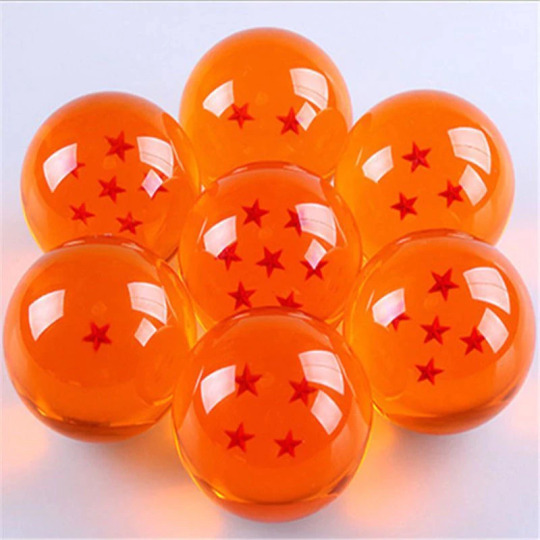
The seven dragon balls.
But what would the Dragon Balls be like if they appeared in the Journey to the West universe? There are two possibilities. The first is the most obvious, the Cintāmaṇi (Sk: "wish-fulfilling jewel"; Ch: ruyi baozhu, 如意寶珠, lit: "as-you-will treasure jewel"). Also known as "dragon jewels" (longzhu, 龍珠), these luminous orbs are commonly held by Bodhisattvas in Buddhist art (fig. 2), thereby signifying their ability to grant any wish that a believer may have. They are also mentioned in Buddhist scripture. For instance, the Treatise of the Great Perfection of Wisdom (Sk: Mahāprajñāpāramitāśāstra; Ch: Da zhidu lun, 大智度論, c. 2nd-century) reveals that the Cintāmaṇi is a bodily relic found in the brains of dragon kings (longzhu chu longnao zhong, 龍珠出龍腦中) (Buswell & Lopez, 2014, p. 193). Therefore, we would be able to maintain the connection to dragons in Journey to the West.

A 14th-century Korean painting of the Earth Store Bodhisattva holding a Cintāmaṇi.
In East Asia, the Cintāmaṇi is closely associated with our second possibility, the Śarīra (Sk: "body"; Ch: Sushe/zi, 舍利/子) (fig. 3). These pearl-like beads figure among the bodily relics left over from the historical Buddha's cremation. [1] Strong (2004) explains: "[They are the result] of a process of metamorphosis brought on not only by the fire of cremation but also by the perfections of the saint (in this case the Buddha) whose body they re-present" (p. 12).
They are said to come in different colors and sizes depending on the country and religious tradition (Strong, 2004, p. 11).
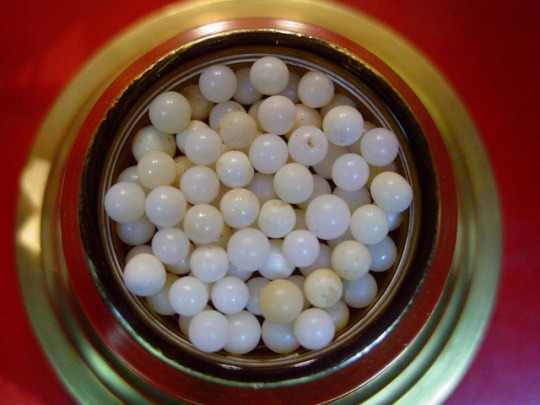
Photo of Śarīra relics.
Journey to the West could have one or even both of these bodily relics. For example, the Cintāmaṇi would allow demon kings or lesser spirits to wish for powerful heavenly weapons, thereby helping them fight stronger opponents; or, the Śarīra could grant the devils more spiritual power, thereby allowing them to bypass centuries of spiritual cultivation.
But neither of these items could help evil beings achieve immortality. I've previously noted that Journey to the West was heavily influenced by the Buddho-Daoist philosophy of the Southern Quanzhen School Patriarch Zhang Boduan (張伯端, mid to late-980s-1082). He believed that in order to become a true transcendent (xian, 仙), one had to achieve both the Daoist elixir of immortality and Buddha-nature (Shao, 1997; 2006). The first extends your life, while the second frees you from the endless rounds of rebirth. While the aforementioned spiritual objects may grant them divine longevity, it won't make them unkillable. And if they are killed, they would still be subject to the wheel of reincarnation. It would be up to them to achieve the last step in this two-step process. But that would require these spirits to mend their evil ways and “return to the right path” (gui zheng, 歸正)—i.e. convert to Buddhism.
Note:
There are three main types of Buddha relics: 1) those of the body left over from his cremation (hair, teeth, nails, bones, and Śarīra beads); 2) those that he used (walking staff, alms bowl, robes, etc.); and 3) those that he taught (i.e. lessons from scripture) (Strong, 2004, p. 8).
Sources:
Buswell, R. E., & Lopez, D. S. (2014). The Princeton Dictionary of Buddhism. Princeton, NJ: Princeton University Press.
Shao, P. (1997). Monkey and Chinese Scriptural Tradition: A Rereading of the Novel Xiyouji (UMI No. 9818173) [Doctoral dissertation, Washington University]. Available from ProQuest Dissertations and Theses database.
Shao, P. (2006). Huineng, Subhūti, and Monkey’s Religion in “Xiyou ji”. The Journal of Asian Studies, 65(4), 713-740. Retrieved from www.jstor.org/stable/25076127.
Strong, J. S. (2004). Relics of the Buddha. Princeton, NJ: Princeton University Press.
#Dragon Ball#Dragon Balls#wish fulfillment#Journey to the West#dragon jewels#JTTW#Lego Monkie Kid#Buddha relics#Cintamani#Sarira#body relic#holy relic#Sun Wukong#Monkey King#Son Goku#Goku
40 notes
·
View notes
Text
Story Idea: The REAL Reason Sun Wukong is Expelled from Subodhi’s School
Last updated: 05-24-2022
https://journeytothewestresearch.com/2022/05/15/story-idea-the-real-reason-sun-wukong-is-expelled-from-subodhis-school/
Sun Wukong is kicked out of Patriarch Subodhi‘s (Xuputi zushi, 須菩提祖師) school in chapter two of Journey to the West (Xiyouji, 西遊記, 1592) for showing off his transformation skills to his less-accomplished religious brothers. Upon their request, he changes into a perfect pine tree that’s completely indistinguishable from a real one. The subsequent applause greatly disturbs the Master, who reprimands and expels the Monkey King under the pretense of saving his life from those who would harm him to learn his heavenly secrets (Wu & Yu, 2012, vol. 1, pp. 123-125). [1]
This event is a turning point in Sun’s life, for he transitions from an inward pursuit of spiritual cultivation to an external quest for power, ending with an attempt to unseat the Jade Emperor (Yuhuang shangdi, 玉皇上帝). This ultimately leads to the Buddha imprisoning the seditious primate beneath Five Elements Mountain and punishing him to a hellish diet for 600 plus years.
Here, I would like to prepose a different reason, one that makes more sense and better aligns with some of my previous story ideas.
I. The story so far
Last year I posted a story prompt to reddit to inspire writers looking for a Xianxia (仙俠, “immortal hero”) plot. It serves as a good summation of my past ideas:
The novel briefly mentions that Sun Wukong lives for ten years in the mountain home of the Buddho-Daoist sage Master Subodhi. The first seven are spent as a junior Daoist monk doing menial tasks and learning basic religious or life skills. However, the last three years are spent as a close disciple of Subodhi, learning elixir arts, magic, and combat skills. The novel glosses over his early cultivation in order to jump directly into the action. But imagine a Xianxia story focusing on those three years.
Drama with fellow disciples could arise from Monkey’s supernatural aptitude for quickly learning and mastering a skill. After all, it only takes him three years to go from a mere stone monkey to a powerful immortal capable of going toe-to-toe with gods and demons with millennia of cultivation and combat experience. Think of the resulting battles between our hero and his jealous senior religious brothers and sisters frustrated with his great progress.
In addition, given Sun’s demonstrated knowledge in boxing, weapons, and troop movement, I came up with the story idea that Subodhi’s school is the training ground for an immortal monastic army akin to the famous Shaolin temple. Shaolin was mobilized by the Chinese government during the 16th-century to battle pirates attacking the coast. Records indicate that one historical Shaolin monk was made the leader, and he was later forced to singlehandedly defend himself against eight individuals vying for his position. Likewise, I imagine heaven calls up Subodhi’s army to battle some demonic evil, and Monkey might quickly rise through the ranks. This would naturally lead to more tension with his fellow disciples, causing him to defend his position. All of these challenges, plus any action seen by the monastic army in heavenly battles, would explain how Sun Wukong became such a seasoned fighter in such a short time.
Plus, there is the added bonus of Subodhi��s army being called upon to fight Sun during his rebellion against heaven. He might have far surpassed his religious brothers and sisters in skill at this point.
II. Additions
In chapter one, Subodhi is shown to have 12 generation names (zibei, 字輩) used to name the students of his religious lineage, three of which were historically used by Daoism. [2]
Guang (廣)
Da (大)
Zhi (智)
Hui (慧)
Zhen (真)
Ru (如)
Xing (性)
Hai (海)
Ying (穎)
Wu (悟)
Yuan (圓)
Jue (覺) (Wu & Yu, 2012, p. 115).
Monkey is part of the tenth generation (Wu & Yu, 2012, p. 115). This means that all of Subodhi’s students taken in around the same time would all have Wu (悟) in their name. Perhaps Sun trains with his fellow Wu cohort but quickly moves on to older generations as his skill rapidly progresses.
This leads me to my next point. Above, I mentioned that Subodhi’s army might be called to bear against Monkey during his rebellion. But wouldn’t they recognize him? This feeds into a common question asked around the internet:
Why doesn’t Wukong run into any fellow disciples on the journey?
Well, the simple answer is that this isn’t important to the plot. But I’ve considered two ideas to work around this miniscule plot hole: One, his younger religious brothers are likely still studying under the Master. And two, the older generations—the ones serving in the monastic army—probably don’t know what Monkey looks like because advanced disciples, within the present story, are made to wear a host of fierce, multi-colored masks (fig. 1) as a way to forsake their identity and subsume the self into deep spiritual and martial cultivation. They would represent the negative thoughts and emotions that keep humans trapped in the illusionary world of Saṃsāra and chained to the wheel of rebirth. Perhaps the face becomes more human and peaceful-looking as the students progress through their training.
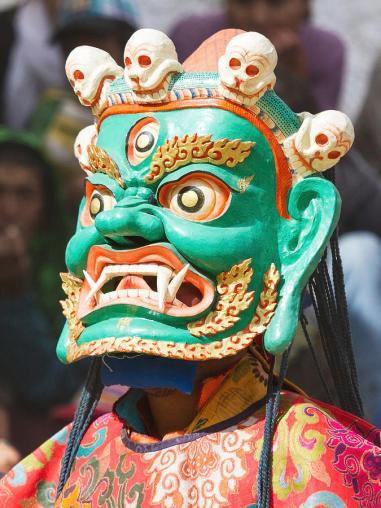
Fig. 1 – “Monk in dharmapala mask performs a mystery dance of Tantric Tibetan Buddhism on Cham Dance Festival” (larger version). Photo by Oleg Ivanov. Image found here.
Also, in my version of the story universe, all immortals and deities attain a halo upon achieving divine status. Here, for example, is a photomanipulation of a haloed Sun Wukong by Elijah McTaggart and myself. Take note of the fiery aureola engulfing the halo. This will come into play shortly (fig. 2). I imagine that these halos/aureolas respectively spin and shine brighter when a divinity’s spiritual power is used.
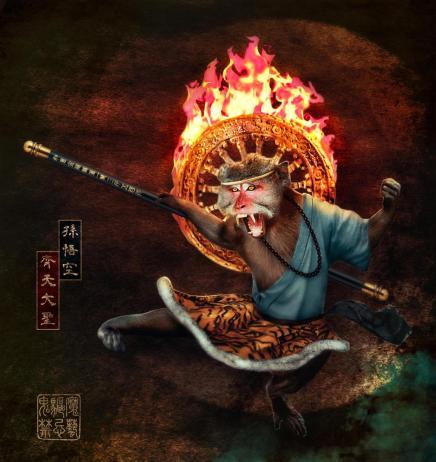
Fig. 2 – The Monkey King with a halo (larger version). As seen on deviantart. Based on my original photomanipulation.
III. Why he is really kicked out
The reason I’ve devised is connected to one of the aforementioned fights between Monkey and his older religious brothers or sisters. Perhaps Sun is attacked by multiple powerful assailants at once (just like the historical Shaolin monk), and when they start to overwhelm him, his anger ignites his halo, which begins to furiously spin and produce a radiant splendor. Instantly, he takes on a titanic cosmic form, growing 100,000 feet (30,480 m) tall and stomping on his assailants. At the same time, his docile-looking mask cracks and reverts to it’s original, fierce form. This, combined with a fiery aureola, gives him the appearance of a giant Dharmapala (Ch: Fahu, 法護), a wrathful “Protector of the Dharma” (Buddhist Law) (fig. 3) (Buswell & Lopez, 2014, pp. 249-250). This display of raw, untamed spiritual power frightens his older religious brethren. Subodhi himself is also taken aback as Monkey exhibits a great, fiery anger, while also manifesting advanced cultivation techniques that haven’t even been taught to him yet—a testament to his great spiritual intelligence. The Master fears that this rage, combined with Monkey’s demonstrated talent for exponential spiritual growth and perhaps a problem with controlling this power (given Sun’s short years of study), will lead him down the path to villainy.
This brings us back to the pine tree incident. Perhaps the fight causes Subodhi to uncharacteristically allow Monkey a chance to visit his generational cohort. And when Sun acquiesces to their requests to see his transformation powers, the Master uses this as an opportunity to expel his student.
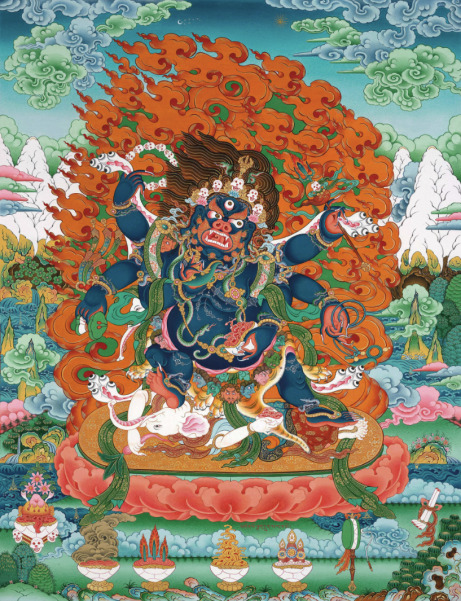
Fig. 3 – A modern thangka of the Six-Armed Mahakala dharmapala (larger version). Image found here.
IV. My thoughts
I like this idea because it foreshadows Sun’s cosmic transformations throughout the novel (ch. 3, 6, 61, and 97). It also foreshadows his later mischief throughout the cosmos and eventual rebellion.
Update: 05-16-22
I imagine Master Subodhi’s mask-wearing monastic army would have an ominous feel to them just like the stylized Persian “immortals” from the film 300 (2006) (fig. 4).
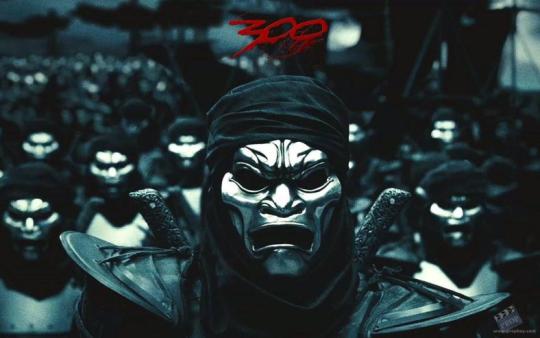
Fig. 4 – The Persian Immortals from 300 (2006) (larger version).
Update: 05-20-22
On second thought, a better mask would emulate the six paths of reincarnation in Buddhist cosmology:
deva
asura (sometimes called “demi-god” or “titan”)
human
animal
hungry ghost
hell
As before, each would indicate the level of a disciple’s spiritual attainment. Perhaps Master Subodhi’s army would have different units of each category, each one being more powerful than the last.
Update: 05-24-22
Some readers might question why I’ve included so many Buddhist elements if Master Subodhi is a Daoist immortal. While this is true, I choose instead to refer to him as a “Buddho-Daoist Sage” as he preaches aspects of both religions in his lectures:
With words so florid and eloquent That gold lotus sprang from the ground. The doctrine of three vehicles he subtly rehearsed, Including even the laws’ minutest tittle. The yak-tail waved slowly and spouted elegance: His thunderous voice moved e’en the Ninth Heaven. For a while he lectured on Dao; For a while he spoke on Chan– To harmonize the Three Parties is a natural thing. One word’s elucidation filled with truth Points to the birthless showing nature’s mystery (Wu & Yu, 2012, p. 122) (emphasis mine).
He even advocates for his students to become Buddhas. For example, the poem that Subodhi uses to reveal the secret of immortality to Monkey ends with: “When that’s done, be a Buddha or immortal at will!” (Wu & Yu, 2012, p. 120).
It’s also important to remember that Master Subodhi is based on Subhuti, a historical disciple of the Buddha.
Notes:
1) I quote the scene of his expulsion below:
“You, Wukong, come over here! I ask you what sort of exhibition were you putting on, changing into a pine tree? This ability you now possess, is it just for showing off to people? Suppose you saw someone with this ability. Wouldn’t you ask him at once how he acquired it? So when others see that you are in possession of it, they’ll come begging. If you’re afraid to refuse them, you will give away the secret; if you don’t, they may hurt you. You are actually placing your life in grave jeopardy.” “I beseech the master to forgive me,” Wukong said, kowtowing. “I won’t condemn you,” said the Patriarch, “but you must leave this place.” When Wukong heard this, tears fell from his eyes. “Where am I to go, Teacher?” he asked. “From wherever you came,” the Patriarch said, “you should go back there.” “I came from the East Purvavideha Continent,” Wukong said, his memory jolted by the Patriarch, “from the Water-Curtain Cave of the Flower-Fruit Mountain in the Aolai Country.” “Go back there quickly and save your life,” the Patriarch said. “You cannot possibly remain here!” “Allow me to inform my esteemed teacher,” said Wukong, properly penitent, “I have been away from home for twenty years, and I certainly long to see my subjects and followers of bygone days again. But I keep thinking that my master’s profound kindness to me has not yet been repaid. I, therefore, dare not leave.” “There’s nothing to be repaid,” said the Patriarch. “See that you don’t get into trouble and involve me: that’s all I ask.” Seeing that there was no other alternative, Wukong had to bow to the Patriarch and take leave of the congregation. “Once you leave,” the Patriarch said, “you’re bound to end up evildoing. I don’t care what kind of villainy and violence you engage in, but I forbid you ever to mention that you are my disciple. For if you but utter half the word, I’ll know about it; you can be assured, wretched monkey, that you’ll be skinned alive. I will break all your bones and banish your soul to the Place of Ninefold Darkness [Jiuyou zhi chu, 九幽之處], from which you will not be released even after ten thousand afflictions!” “I will never dare mention my master,” said Wukong. “I’ll say that I’ve learned this all by myself.” Having thanked the Patriarch, Wukong turned away, made the magic sign, pulled himself up, and performed the cloud-somersault (Wu & Yu, 2012, pp. 124-125).
2. Ter Haar (2021) provides a list of such generational names:
Table 1. The use affiliation characters by People of the Way
Dao 道 (Huzhou, Jiaxing, Taizhou, Suzhou) (13 cases) – The Way Zhi 智 (Huzhou, Jiaxing) (6 cases) – Wisdom Yuan 圓 (Huzhou, Jiaxing, Taizhou) (5 cases) – Complete Pu 普 (Taicang, Taizhou, Huating) (4 cases) – Universal Miao 妙 (Deqing, Jiaxing) (3 cases) – Wondrous Jue 覺 (Huating) (1 case) – Awareness (p. 39)
Sources:
Buswell, R. E., & Lopez, D. S. (2014). The Princeton Dictionary of Buddhism. Princeton University Press.
Ter Haar, B. (2021). The White Lotus Teachings in Chinese Religious History. Netherlands: Brill.
Wu, C. & Yu, A. C. (2012). The Journey to the West (Vol. 1). Chicago, Illinois: University of Chicago Press.
#Sun Wukong#Monkey King#Subodhi#Master Puti#Journey to the West#JTTW#Lego Monkie Kid#Buddhism#Taoism#Daoism#why Sun Wukong is expelled#why the Monkey King is expelled
52 notes
·
View notes
Text
Buddha’s Birthday and Happy Mother’s Day
Today is the Buddha's birthday, so I'd like to share my article which compares the early lives of Sun Wukong and Prince Siddhartha.
https://journeytothewestresearch.com/2020/10/04/parallels-between-the-monkey-king-and-the-buddha/
Similarities include:
They experience a supernatural birth, both splitting open their mother in the same fashion as ancient Chinese sage-kings. Siddhartha emerges from the side of Queen Maya and Wukong forms from a stone egg birthed by a split rock.
They produce a radiant splendor upon their birth. Siddhartha’s body shines “in every direction”, while beams shoot from Sun’s eyes as he bows to the “four quarters”.
They spend early years as royalty. The prince is born into the royal Shakya clan and Monkey achieves kinghood through a test of bravery.
They feel a sense of shock upon realizing the impermanence of life. Siddhartha is exposed to the evils of old age, sickness, and death via the “four signs” initiated by heaven. Wukong instead comprehends the fearsome hand of Yama through his observation of time.
They set out on a quest to find a means of escaping old age and death. The prince travels the land studying meditation and pondering concepts of the body, the mind, the soul, and selfhood. Monkey searches the world for over a decade before he is taken in by the Buddho-Daoist sage Subodhi.
They achieve their goal through spiritual practices. Siddhartha defeats Mara and achieves perfect enlightenment via intense meditation. Wukong breaks free from Yama/Mara and achieves immortality via Daoist elixir arts.
Attached is a picture of a vintage wooden sign that I recently purchased. It says "The Buddha's Light is Everywhere".

Also, Monkey would like to wish you and yours a Happy Mother’s Day!
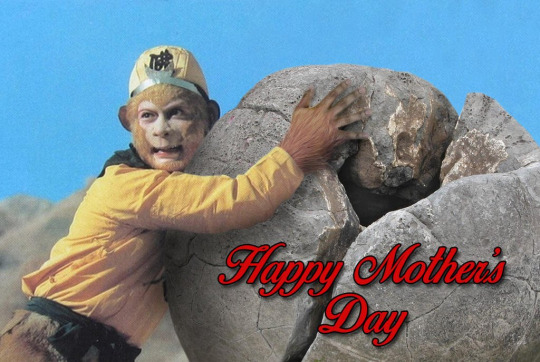
33 notes
·
View notes